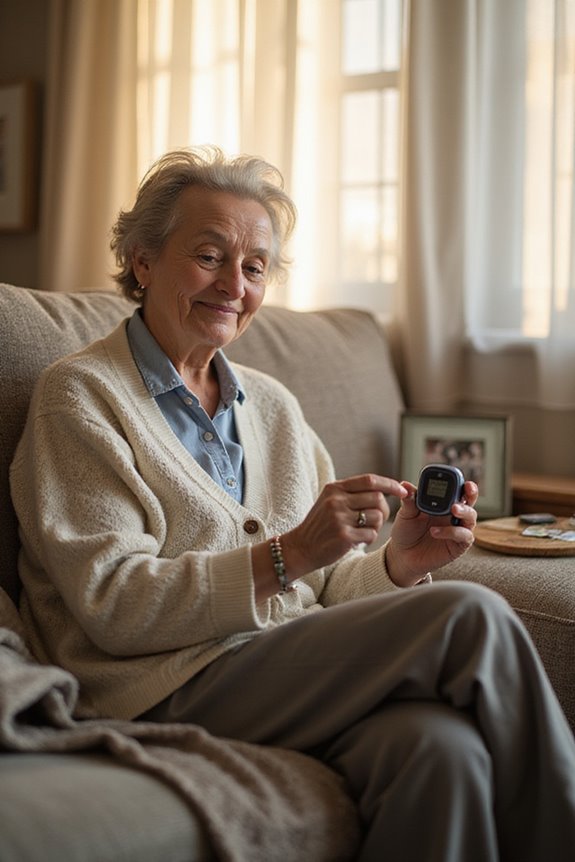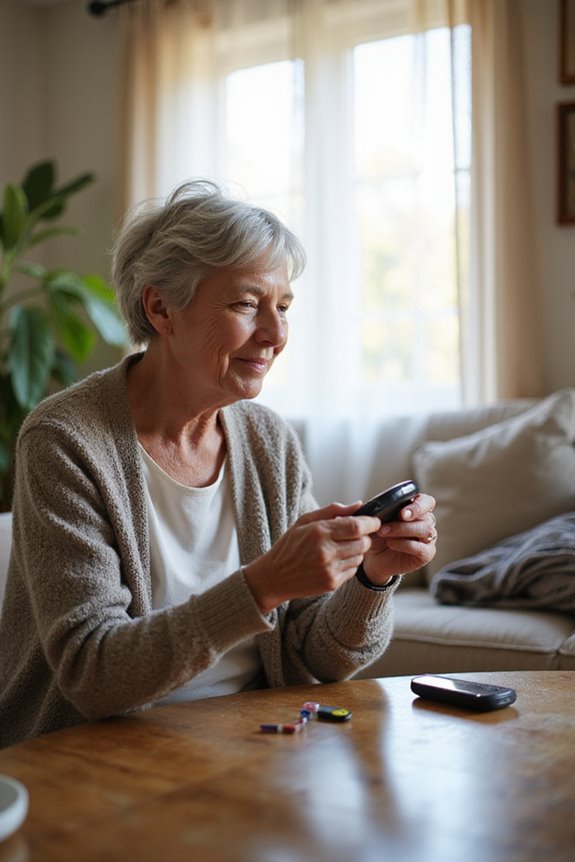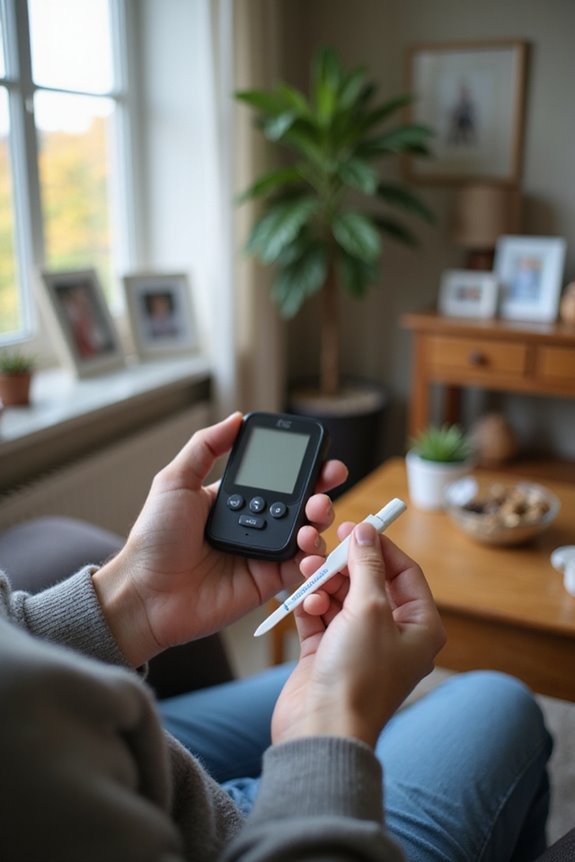Continuous Glucose Monitoring (CGM) and traditional Blood Glucose Meters (BGM) present different methods for diabetes management. CGMs measure glucose levels continuously via interstitial fluid, providing real-time data and reducing finger prick frequency. In contrast, BGMs require manual blood tests for discrete measurements. CGMs enhance trend tracking and alert users to glucose fluctuations, while BGMs are often more cost-effective and provide immediate results. Understanding these differences is vital for effective glucose management and personalized treatment strategies. More information is available on clinical implications and user choices.
Key Takeaways
- Continuous Glucose Monitoring (CGM) offers real-time glucose tracking, while traditional Blood Glucose Meters (BGM) require discrete fingerstick tests for readings.
- CGMs measure glucose levels in interstitial fluid, whereas BGMs measure blood glucose directly, which can affect accuracy and response time.
- CGMs reduce the need for frequent finger pricks, providing a more comfortable experience compared to BGMs, which require regular testing.
- CGMs provide comprehensive insights, including glucose trends and Time-in-Range data, while BGMs mostly offer immediate readings with limited data storage.
- CGMs generally involve higher initial costs and ongoing sensor replacements, whereas BGMs are often more cost-effective and portable for daily use.
Overview of Continuous Glucose Monitoring (CGM)
Continuous Glucose Monitoring (CGM) represents a significant advancement in diabetes management, as it provides real-time insights into glucose levels throughout the day and night.
CGM Technology and Function
- CGMs measure glucose in interstitial fluid, unlike traditional glucose meters that test blood.
- Sensors are implanted under the skin, typically replaced every 7 to 14 days.
- Data is transmitted wirelessly to a receiver or smartphone app.
Sensor Accuracy
- Many CGMs require calibration with fingerstick readings, while factory-calibrated models do not.
- Continuous data collection enables users to monitor glucose levels during daily activities, including sleep and exercise.
Clinical Benefits
- CGMs enhance glucose management, reducing hypoglycemic emergencies.
- Users experience improved comfort with fewer finger pricks and optimized insulin dosing. Additionally, the ability to log food intake and exercise alongside glucose readings enhances overall health management.
Understanding Blood Glucose Meters (BGM)

Understanding Blood Glucose Meters (BGM) is essential for effective diabetes management, as these devices provide critical data for monitoring blood glucose levels.
Types of Meters
- Standard Fingerstick Meters: Require a blood drop via test strip.
- Minimally Invasive Strip-Based Meters: Use small blood samples.
- Alternative Site Testing Meters: Allow samples from various body parts.
- Bluetooth-Enabled Meters: Sync data wirelessly.
- Multi-Functional Meters: Monitor additional metrics, like ketones.
Meter Accuracy
- Accuracy varies greatly among devices, evaluated using MARD and ISO standards.
- Frequent calibration may be needed, as accuracy can decline over time.
User Considerations
- Testing can cause discomfort.
- Devices are portable but require ongoing supply costs.
- Most meters need basic digital literacy for operation.
- Many modern glucose monitors provide quick result times of 5 to 7 seconds for efficient testing.
Key Differences Between CGM and BGM
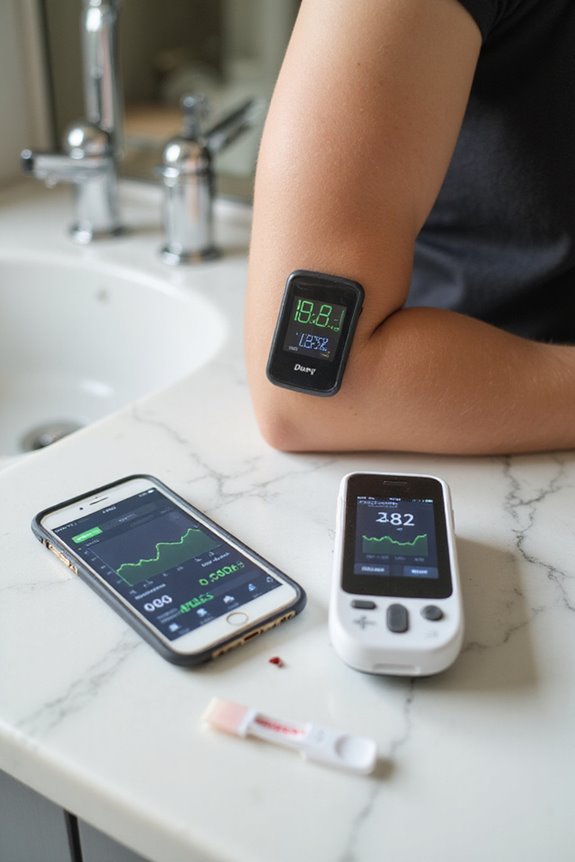
When evaluating the differences between Continuous Glucose Monitors (CGM) and traditional Blood Glucose Meters (BGM), it becomes evident that these devices serve distinct purposes in diabetes management.
Measurement Type
- CGMs measure glucose in interstitial fluid; BGMs measure it in blood.
- CGMs provide continuous data, while BGMs require discrete fingerstick tests.
User Experiences
- CGMs eliminate frequent finger pricks, enhancing convenience.
- BGMs are straightforward, whereas CGMs require initial training.
Data Analysis
- CGMs track Time-in-Range (TIR) and identify glucose trends.
- BGMs offer limited data storage compared to CGMs.
Accuracy and Reliability
- CGMs may slightly lag in readings; BGMs serve as calibration references.
- CGMs necessitate sensor replacements every 10-14 days, impacting continuous data availability. Additionally, some BGMs come with memory storage capabilities that allow for tracking multiple readings and averaging results.
Benefits of Continuous Glucose Monitoring
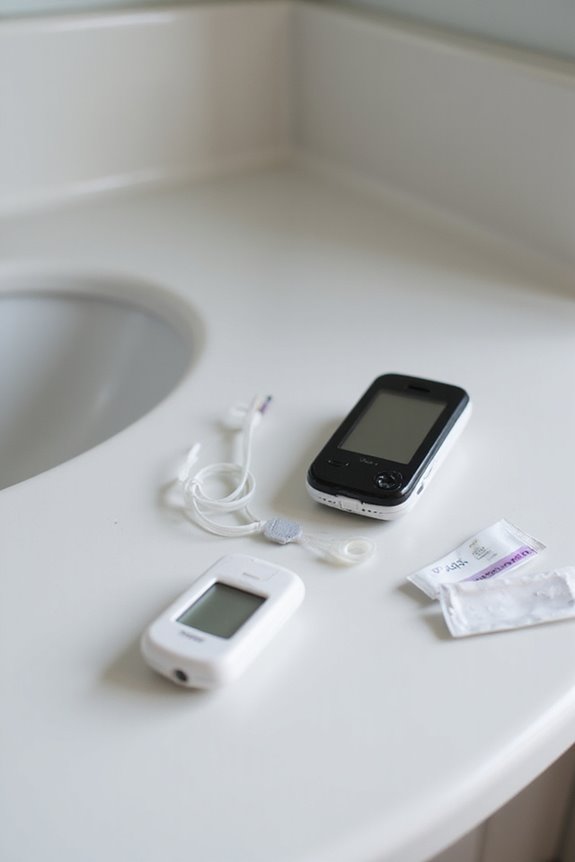
The benefits of Continuous Glucose Monitoring (CGM) extend beyond mere convenience, greatly enhancing diabetes management and patient outcomes.
Improved Glucose Control
CGM enhances data accuracy, allowing for timely interventions based on glucose trends. This results in reduced hemoglobin A1c levels and ideal glucose maintenance.
Reduced Hypoglycemia and Hyperglycemia Events
Real-time alerts prevent dangerous glucose extremes, considerably lowering the risk of hospitalizations.
Enhanced Quality of Life
CGM diminishes the need for frequent finger-prick tests, fostering patient empowerment and engagement in their health management.
Economic and Healthcare Benefits
By decreasing emergency department visits, CGM contributes to cost-effective diabetes care.
Educational and Therapeutic Advantages
Providing biofeedback, CGM enables tailored treatment adjustments, bolstering effective diabetes management strategies. Additionally, CGM systems like the Nutrisense Kit offer continuous monitoring and personalized insights for users.
Advantages of Blood Glucose Meters
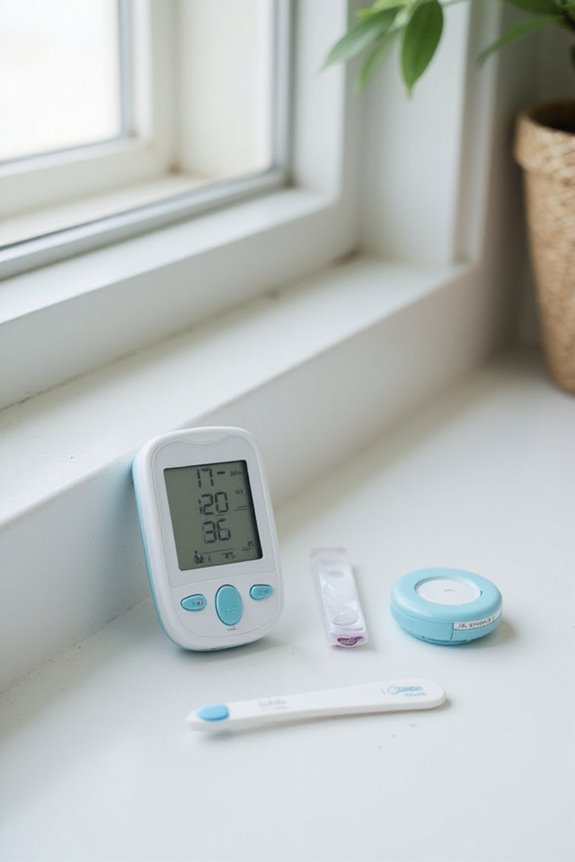
Affordability Factors
- Traditional meters are generally more cost-effective, especially for uninsured users.
- Prices have decreased considerably, enhancing accessibility.
- Many health insurance plans cover meters and test strips.
Usability Features
- BGMs are easy to use, suitable for all ages, and require minimal training.
- They offer immediate readings, allowing for quick dietary or insulin adjustments.
- Devices are portable and do not require sensor maintenance.
Patient Engagement
- BGMs empower users to actively manage their diabetes through self-monitoring.
- Immediate feedback aids in recognizing patterns related to diet and lifestyle. This combination fosters independence and proactive management of health, as the accuracy of readings is crucial for effective diabetes management.
Clinical Implications of CGM and BGM
Clinical implications of Continuous Glucose Monitoring (CGM) and Blood Glucose Meters (BGM) greatly influence diabetes management strategies.
- CGM provides continuous real-time glucose measurements, enhancing clinical accuracy compared to the episodic data from BGM.
- Studies indicate CGM can lower HbA1c levels by an average of 0.25 percentage points more effectively than BGM.
- Alerts from CGM systems proactively notify users of potential hypo- or hyperglycemia, improving patient safety.
- The reduction of fingerstick testing enhances patient comfort and adherence, making glucose monitoring less intrusive.
- CGM’s detailed metrics facilitate personalized management, reducing diabetes-related distress and supporting better long-term outcomes.
Choosing the Right Glucose Monitoring Method for You
When selecting a glucose monitoring method, individuals must consider various factors that influence their diabetes management.
Personal Preferences and Lifestyle Factors
- Continuous Glucose Monitoring (CGM) provides real-time data, reducing the need for frequent fingersticks, which many find inconvenient.
- Traditional Blood Glucose Meters (BGM) offer simplicity and affordability, often preferred by those who prioritize point-in-time testing.
- CGMs enhance lifestyle flexibility with automatic data transmission, while BGMs require manual testing, interrupting daily activities.
- Cost considerations play a significant role; CGMs generally incur higher expenses due to ongoing sensor replacement, whereas BGMs may be more financially accessible.
Ultimately, the choice between CGM and BGM should align with personal preferences, lifestyle factors, and individual healthcare needs, ensuring ideal diabetes management.
Frequently Asked Questions
How Do I Choose Between CGM and BGM for My Lifestyle?
Choosing between options for lifestyle preferences often feels like selecting the perfect outfit, yet cost considerations can overshadow the decision. Ultimately, individuals should weigh convenience against budget to find their ideal fit for health management.
Can CGM Be Used for Non-Diabetic Individuals?
CGM benefits extend to non-diabetic monitoring, offering insights into glucose patterns and lifestyle impacts. This continuous feedback can help individuals make informed choices, fostering a sense of community among those aiming for ideal health.
What Is the Lifespan of a CGM Sensor?
The lifespan of a CGM sensor typically ranges from 7 to 14 days, influencing sensor longevity and replacement schedule. Users benefit from advancements, with new models promising extended wear, enhancing convenience and fostering a sense of community.
How Often Should I Calibrate My Blood Glucose Meter?
How often should one calibrate a blood glucose meter to guarantee meter accuracy? Calibration frequency typically ranges from monthly to daily, depending on the device and circumstances, assuring reliable readings for effective health management and support.
Are There Any Side Effects of Using CGM?
Side effects of using continuous glucose monitoring (CGM) include potential skin irritation and discomfort, impacting user comfort. Variability in sensor accuracy may also lead to concerns regarding reliable glucose management, affecting overall user experience and emotional well-being.

